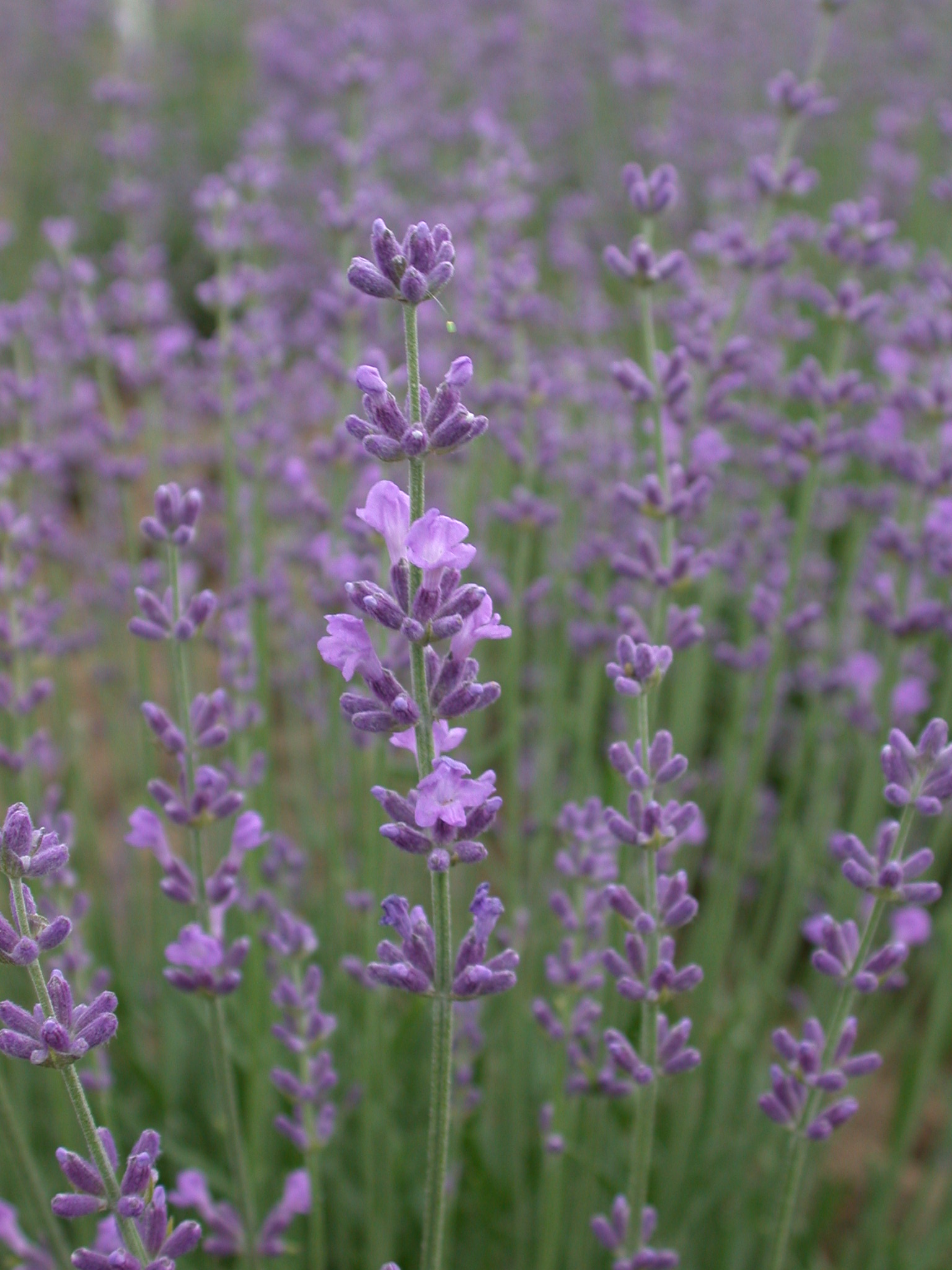Lavandula angustifolia Mill. – Common lavender, true lavender
Lavandula angustifolia is a perennial aromatic shrub in Lamiaceae family (N). The roots-system is wooden, branched. The short, thick, warted stem is also wooden above the soil. The shrub is branched, globular, 40-60 cm tall, 80-120 cm in diameter. The flower stems are 20-40 cm long. The leaves are opposite decussate, linear, lanceolate, 3-5 cm tall, 0.2-0.5 cm wide, greyish-green, covered with hair densely. The flowers bloom from the end of June until July. The purple flowers stand in loose spikes on the end of the flower stems. The fruits are 1.8-2.2 mm long, oval, dark-brown or black, shiny. Thousand seed weight: 0.85-1.1 g. The closely related Lavandula x hybrida is also cultivated for essential oil production. The whole plant is bigger than Lavandula angustifolia: the shrub is 80-100 cm tall, 150 cm, the leaves are longer (5-7 cm) and wider (0.8-1 cm), the flower stems are branched and 60-90 cm long, the colour of the florets is greyish-purple. The plant is covered with hair finely.
True lavender is native to the coasts of Mediterranean Sea, distributed through South, Central Italy, South France, Spain. The first Hungarian plantation was made in Tihany in 1920 by Gyula Bittera. Lavender has high drought tolerance, it prefers dry, calcic soils and warm climate.
The dried flowers (Lavandulae flos) and the essential oil distilled from the fresh flowers (Lavandulae aetheroleum) are the official drugs of true lavender. Both mentioned in Hungarian Pharmacopoeia VIII. Sometimes the floral stems are also used (Lavandulae herba). According to the requirements the flowers have to contain at least 13 ml/kg essential oil, while the essential oil main compound has to be linalyl acetate (25-47 %).
True lavender’s most important active agent is essential oil (0,5-3 %) with linalyl acetate (30-60 %) and linalool (20-50 %) as main compounds. Lavandula x hybrida flowers accumulate more essential oil (0.9-5 %), but the volatile compounds amount is different (only 7-30 % linalyl acetate, 25-45 % linalool). The herb also contains the derivates of cinnamic acid, tannins, coumarins, flavonoids and sterols.
Lavandulae flos has sedative, cholagogue, antibacterial effect. The infusion of the drug is applied in sleeping disorders, nervousness, dissention, gallbladder problems. The volatile oil is used externally in form of ointments or alcoholic extracts for curing rheumatism and neuralgia. Lavender oil is one of the most important material of cosmetic and fragrance industry.


